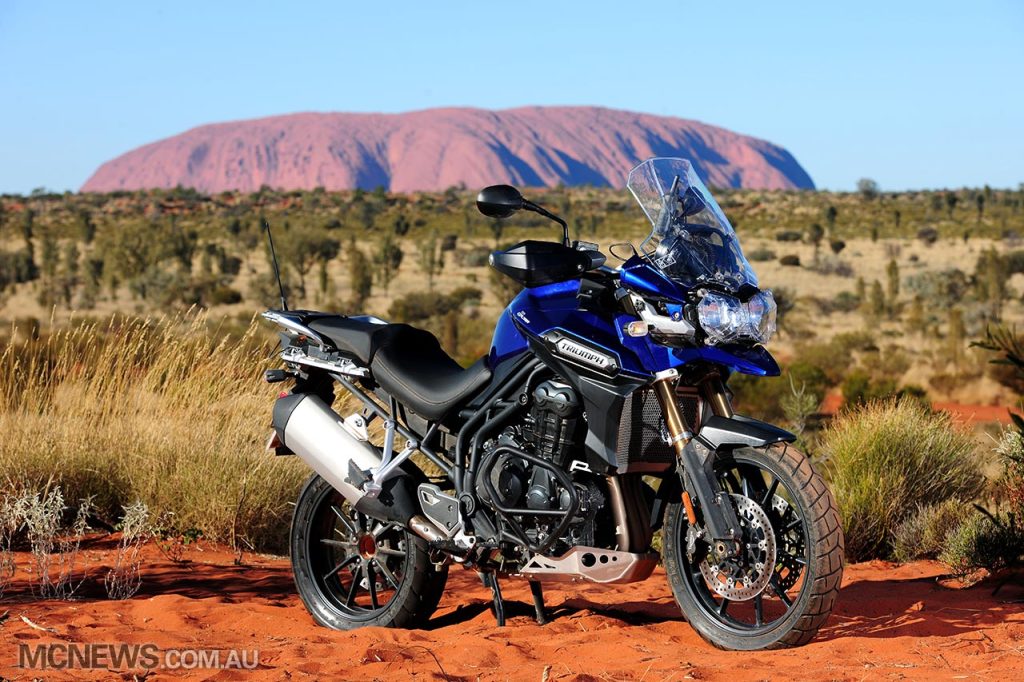Triumph Tiger Explorer 1200 Test
By Trevor Hedge
This month MCNews.com.au attended the launch of the all-new 2022 Tiger 1200 which got us thinking back to a decade ago, when the first Triumph Tiger Explorer 1200 was launched, also in the South Australian outback, along with some ventures into the Northern Territory. Check it out below.
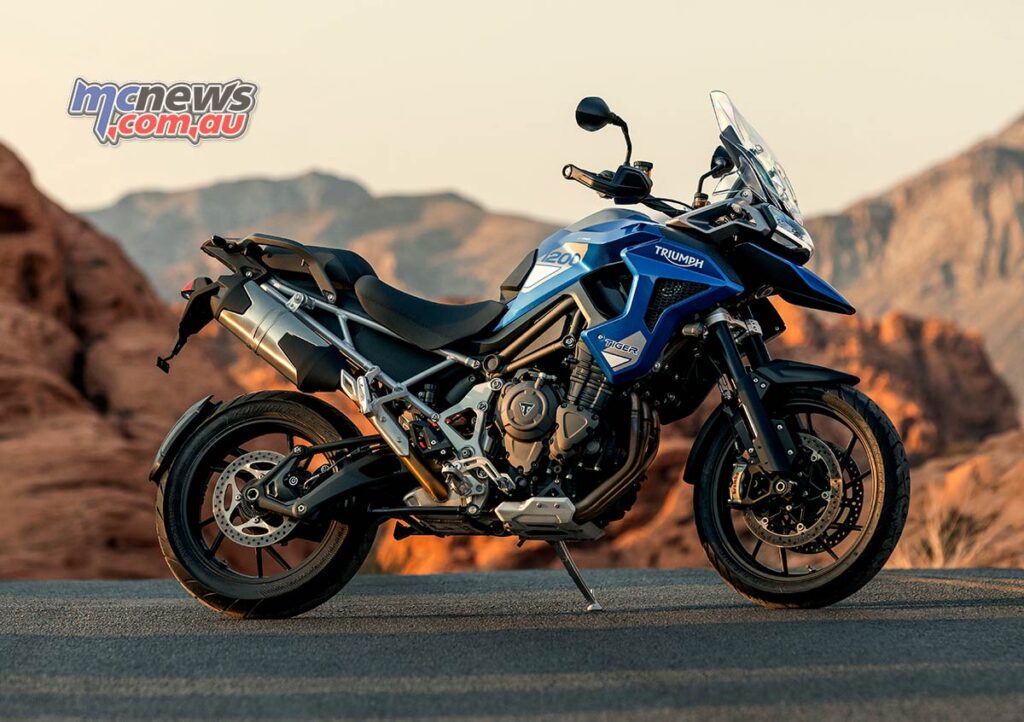
2012 Triumph Tiger Explorer Review
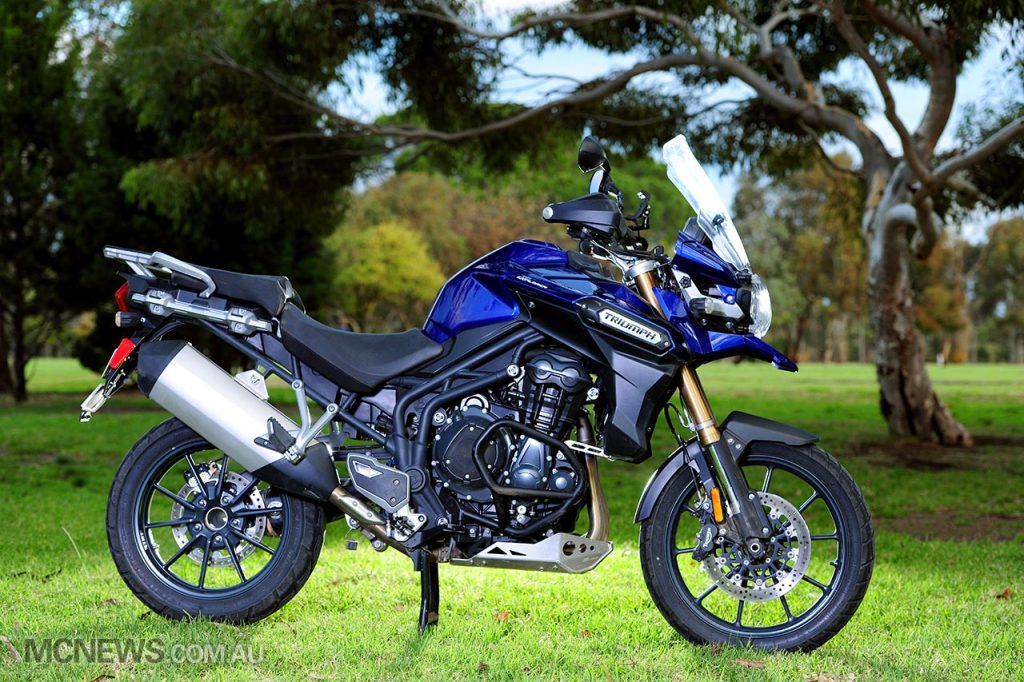
Aimed fair and square at stealing the limelight from BMW’s hugely successful R 1200 GS, Triumph engineers set their sights from the concept stages in 2006 and have now pulled the trigger on the release of the all-new Explorer 1200, emptying both barrels over the Channel at the Germans. We recently covered 2000km from Uluru to Adelaide, including such famed routes as Oodnadatta Track and Brachina Gorge, to find out how accurate Triumph’s aim has been…
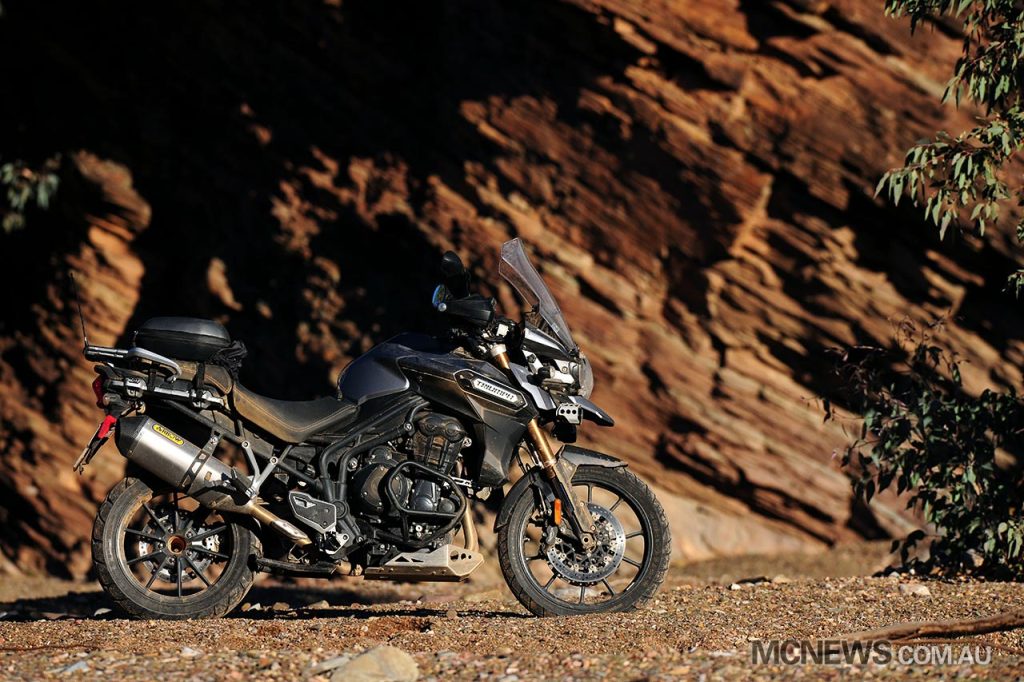
Powered by a new 1215cc triple-cylinder engine, Triumph can claim the highest output of any adventure-tourer. Ducati’s MTS1200 pumps out more ponies but that horse is not suitable for any remotely serious off-road shenanigans, thus doesn’t quite fit in the adventure-touring equation.
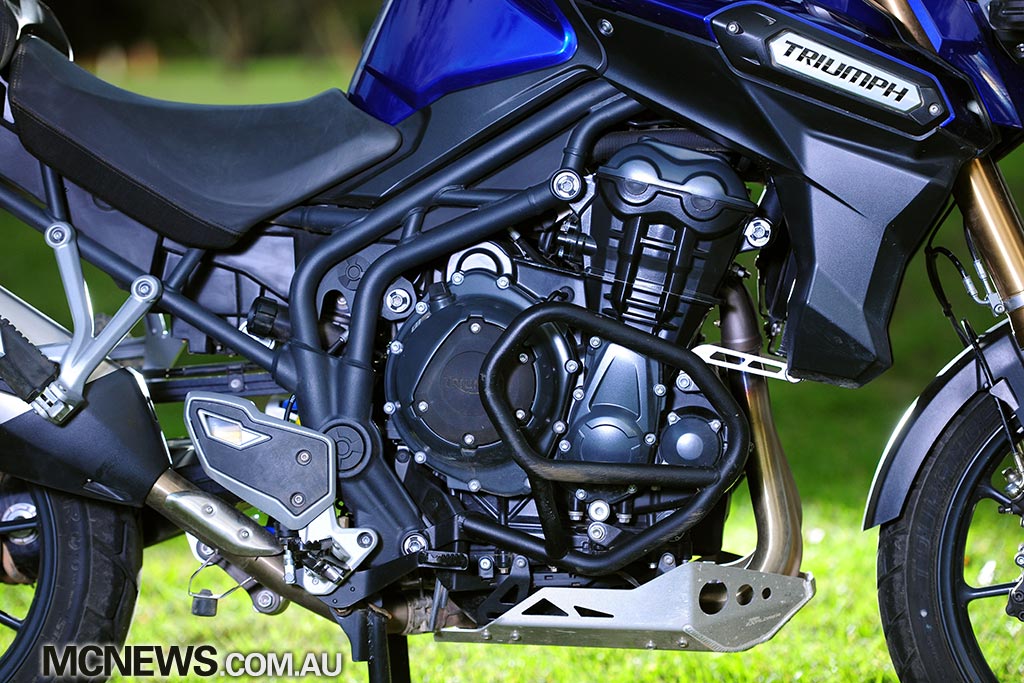
The engine in the 2022 model is actually smaller, 1160 cc, but makes a claimed 148 horsepower
The new engine also makes more torque – 2012 engine pictured
The new engine has no external lines to break or snag on anything in a minor tumble. The only pipes going in and out of the motor are the inlet and outlet hoses to the radiator – that’s smart thinking. Even the oil cooler is housed inside the sump where its heat exchanger is fed coolant via internal passages. 16,000km service intervals are best in class, helping to reduce running costs and the 950w auto-clutch generator is the most powerful in motorcycling.
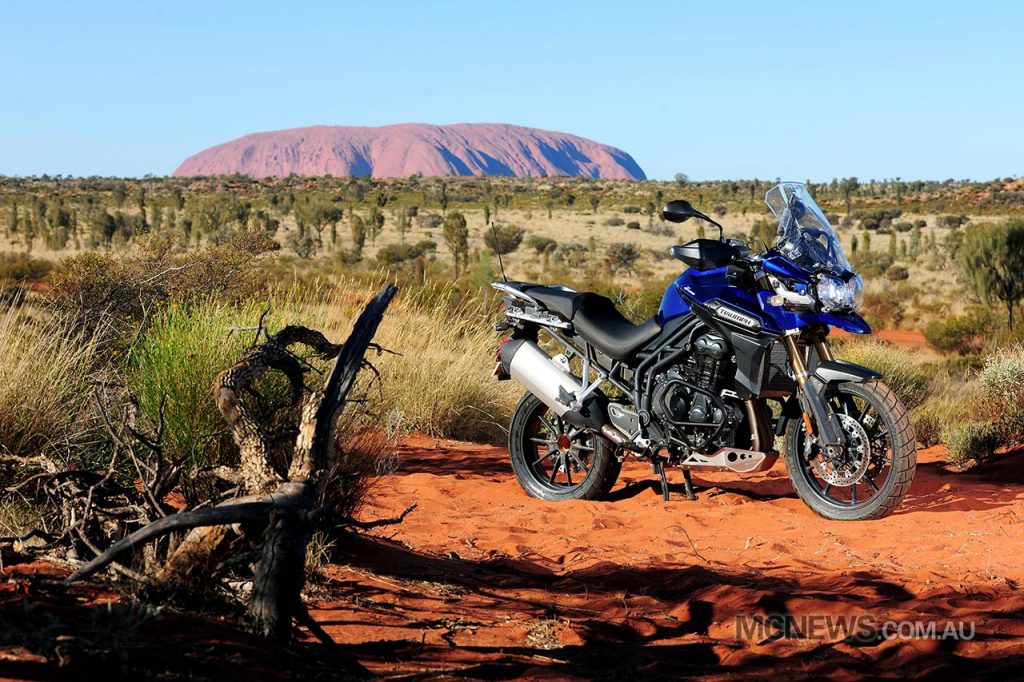
A new ride-by-wire system completely devoid of a throttle cable makes its first appearance and has allowed Triumph to offer cruise control as a standard feature on the Explorer 1200. Something not offered by other machines in this class and always handy for the highway hauls.
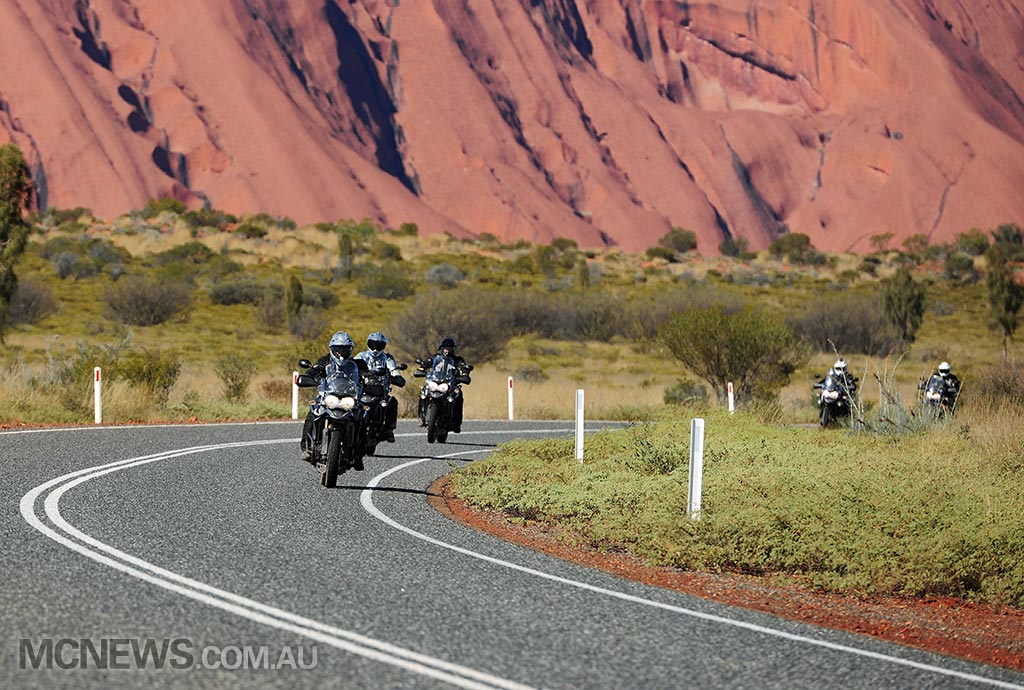
In fact, Triumph have kitted out the Explorer with the full gamut of electronics: traction control and ABS (both switchable) all included in the $21,790 retail price. Heated grips are a $245 ask (+$45 mounting kit). Our test machine was also fitted with the optional Arrow pipe ($1295), adding a nice note in the tight stuff without being intrusive on the highway; bash plate ($295), engine guards ($310), headlight protector ($71.95), radiator guard $135), hand guards ($135), touring screen ($229) and fog lights ($450). Tyre pressure monitoring is also available for $216.
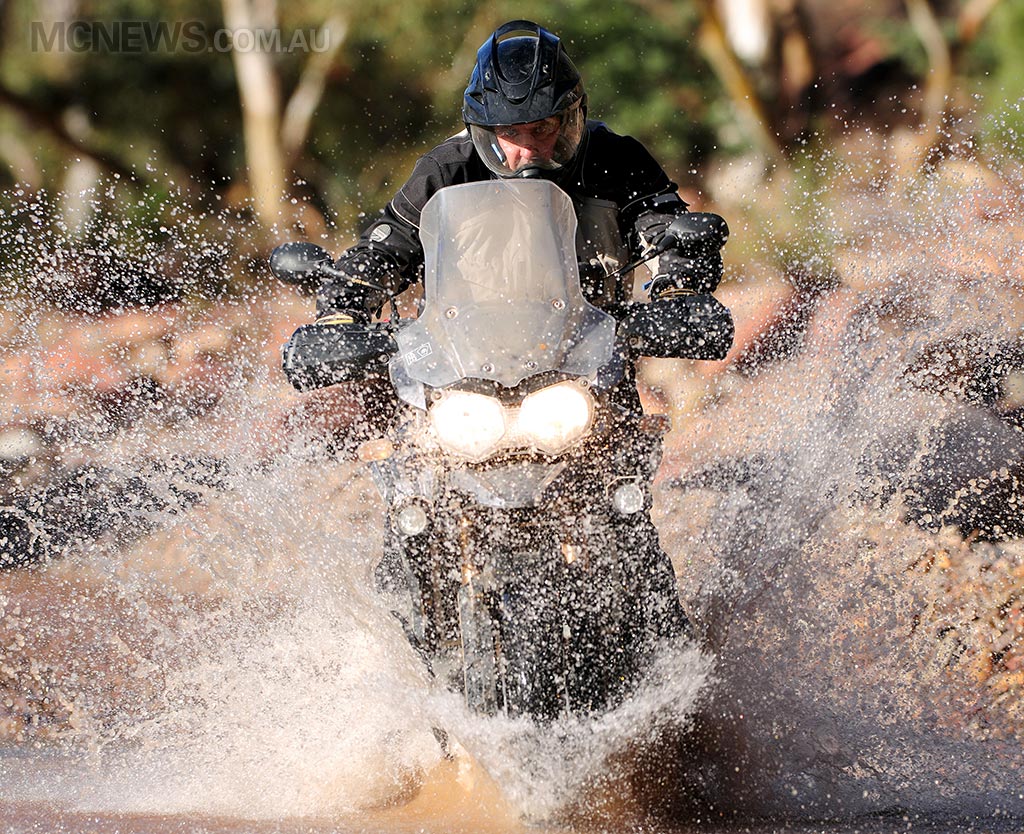
On the road the engine provides perhaps the most linear power delivery in motorcycling history. Triumph claim a 121 Nm torque peak at 6400 rpm and 137 hp (102 kW) at 9000 rpm with more than 100 Nm of torque available from as low as 2500 rpm; I believe them. The EFI and throttle response can’t be faulted. If anything – as ridiculous as it sounds – it may be too perfect; while incredibly impressive from an engineering perspective I felt it lacked character and left me a little cold.
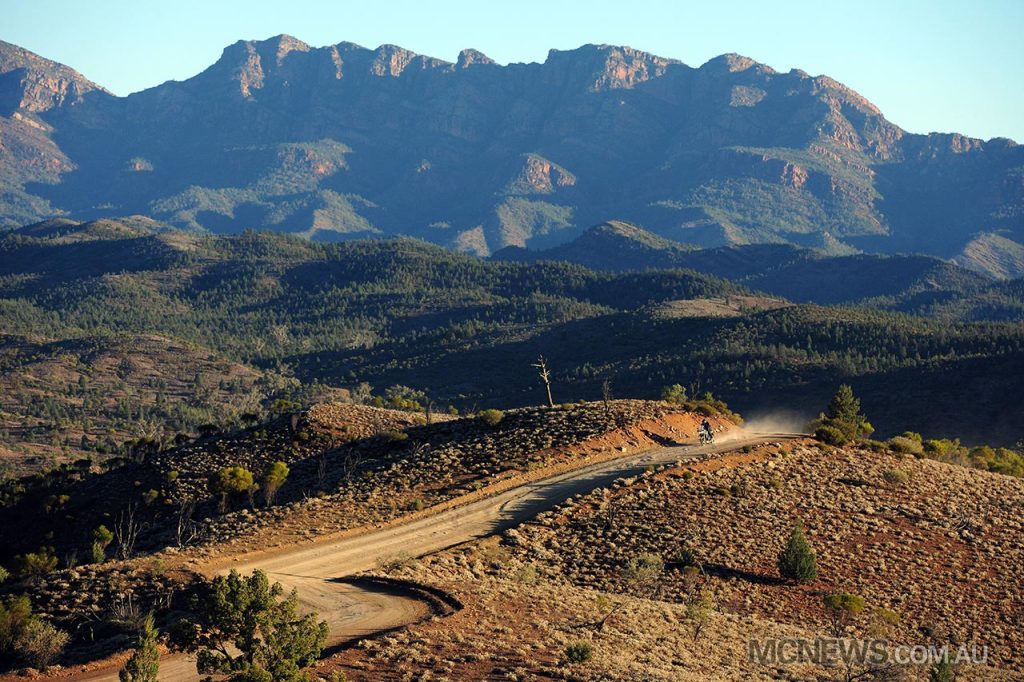
It’s a terrible thing to say, but I feel I have to as most machines in this class have incredibly charismatic motors. From BMW’s unique boxer, to Honda’s new V-Four CrossTourer and KTM’s off-road benchmark Adventure, with its far-from-faultless but hugely addictive 990cc v-twin, machines in this category really do possess their own unique nature, yet the Triumph, I can’t help feeling, is the most vanilla of the bunch. Despite it in many ways being the most technically impressive and the most powerful, the size of my grin did not correspond to the opening of the throttle in the way I like.

Off-road the fluidity of the throttle response and lack of surges anywhere in the torque curve allows the Explorer to find traction where many other bikes would struggle. Never has 130hp felt so controlled.
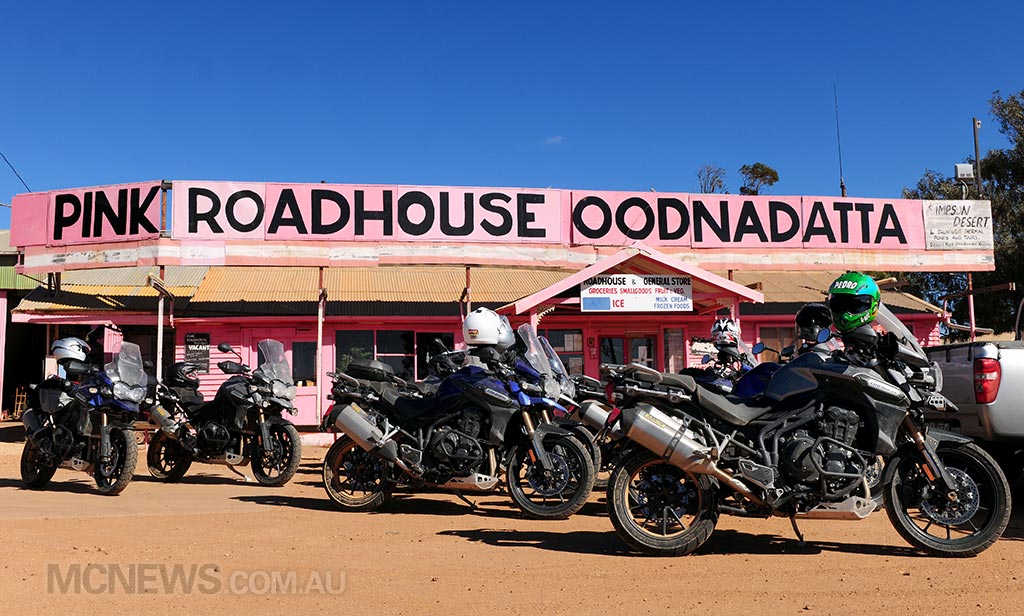
Another area where Triumph engineers have excelled themselves is the new shaft-drive system. Here I am an indisputable fan of their handiwork. Actually, I will go further than that and say it sets a new benchmark in motorcycle final drives. Our test machine exhibited virtually no discernible driveline lash and frankly made most other manufacturers efforts in this field feel positively agricultural. Getting on/off the throttle or shifting through the smooth six-speed box is a fuss-free affair; you would swear you had a perfectly adjusted new chain rather than a shaft. The Explorer even has a slipper clutch.
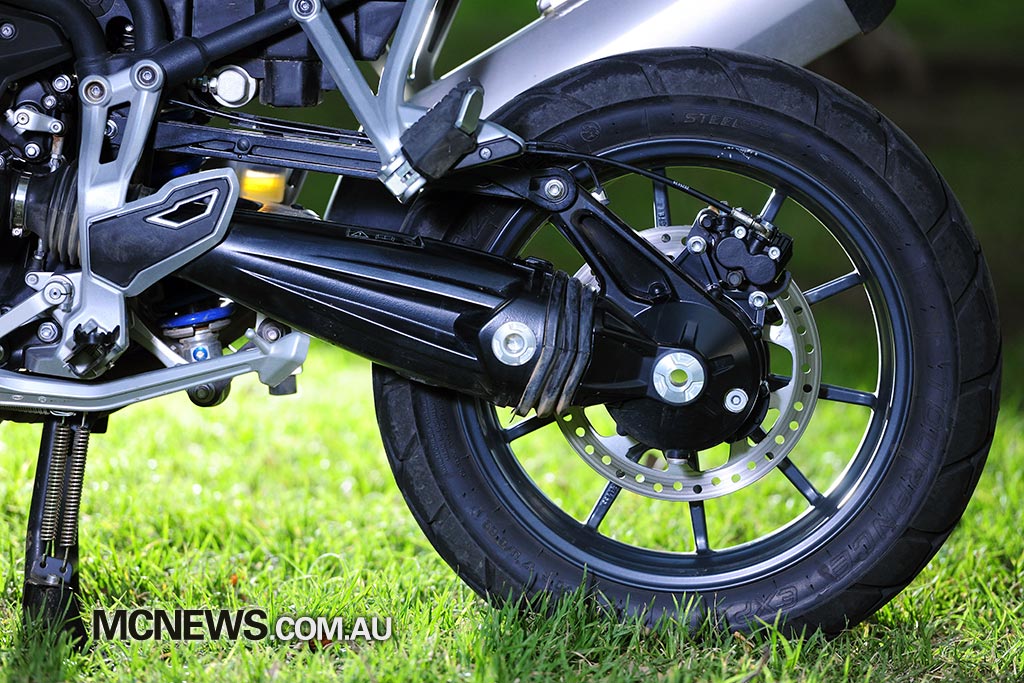
The riding position feels quite natural. The bars can be adjusted for reach, there is plenty of legroom and the standard screen does a reasonable job of protecting you from buffeting. The standard seat is impressive and can be adjusted between a height of 840 and 860mm. Optional low (810mm – $249) or tall (895mm – $295) seats are also available, catering for a huge variety of riders. For an extra $449 Triumph will even supply you with a heated seat to toast your buns, $395 for a heated passenger seat.
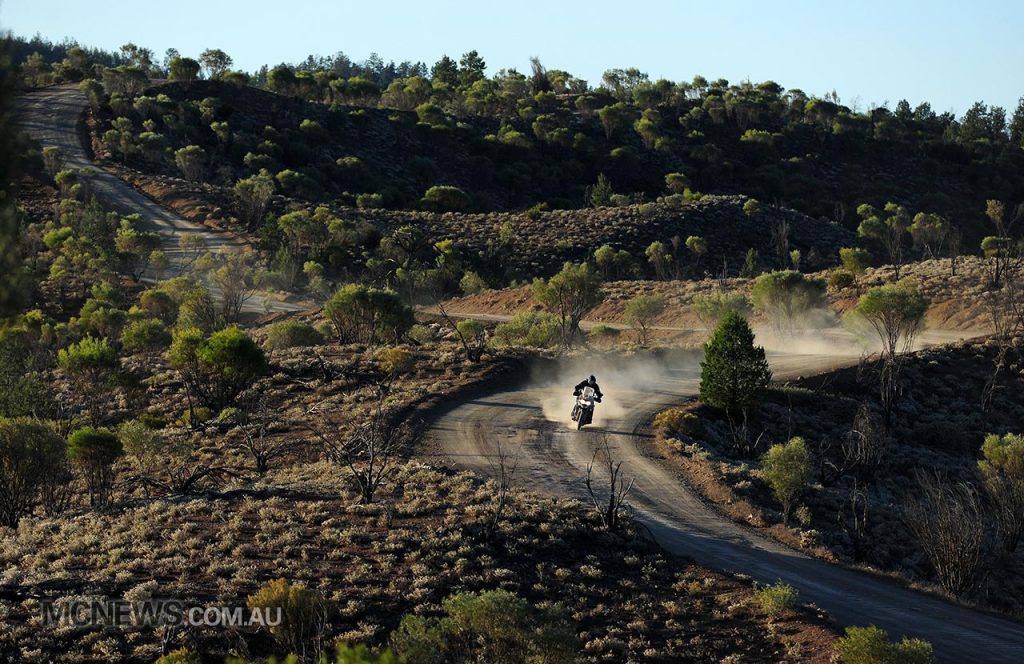
Tipping the scales at 259kg wet, the Explorer is no light weight but the heft is never felt on the move and thankfully I had no reason to pick it up. That mass and the best in class load capacity, are no doubt the reason why Triumph have fitted the Explorer with such taut suspension. While impressively damped the 46 mm Kayaba forks and the single shock in particular do transfer small bumps through to the rider.
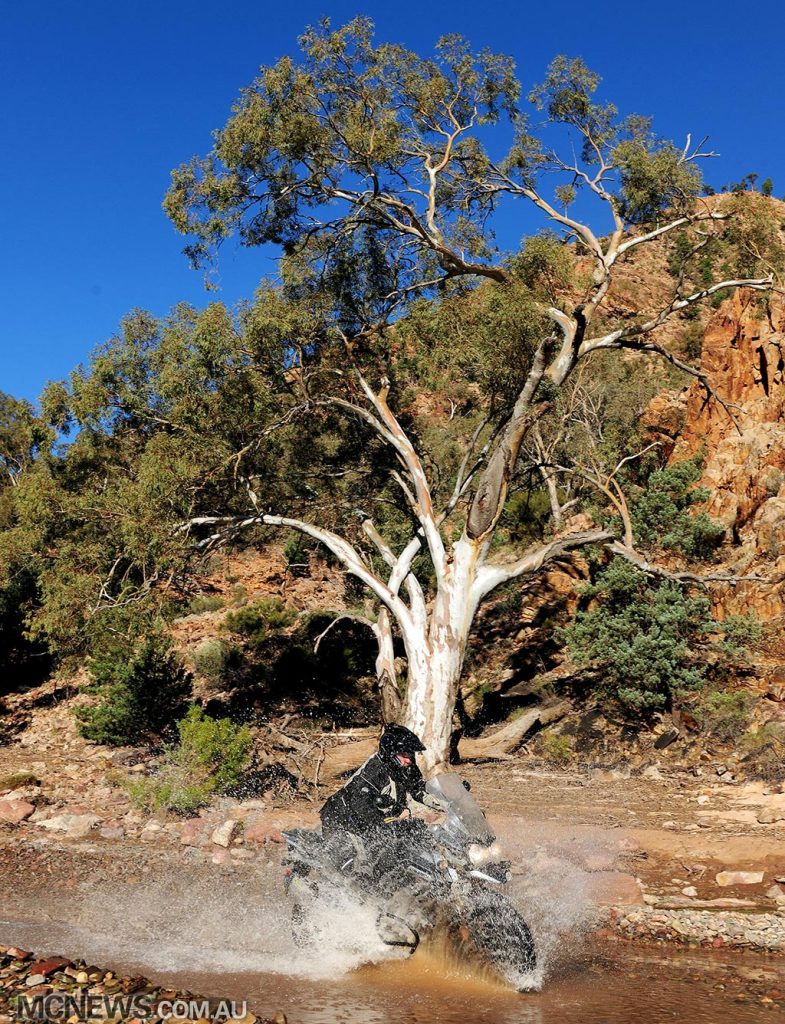
It is not something you notice at first, but after a lot of seat time you do start to feel a marginal lack of initial plushness in the suspension response. On overseas highways and back roads this is probably not a major issue but Australian road surfaces are different, and not in a good way.
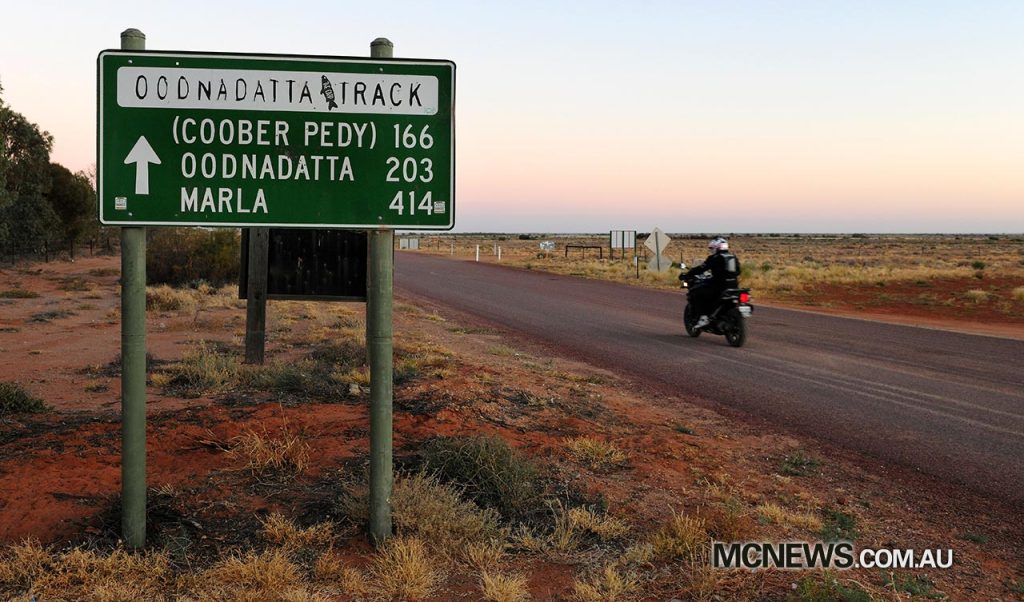
If the seat was not brilliant this minor lack of small bump compliance from the rear end would be a major bone of contention, but luckily the seat is impressive enough for me to make only minor note of this suspension foible rather than complain loudly, and to be fair it really only does start to show up during big days in the saddle. It is probably a price worth paying when loaded to the gunnels with panniers and partner. While I haven’t piloted the Explorer loaded as such, I predict this is where the suspension package will come into its own and when fully laden, perhaps make it shine a little above the competition thus loaded.
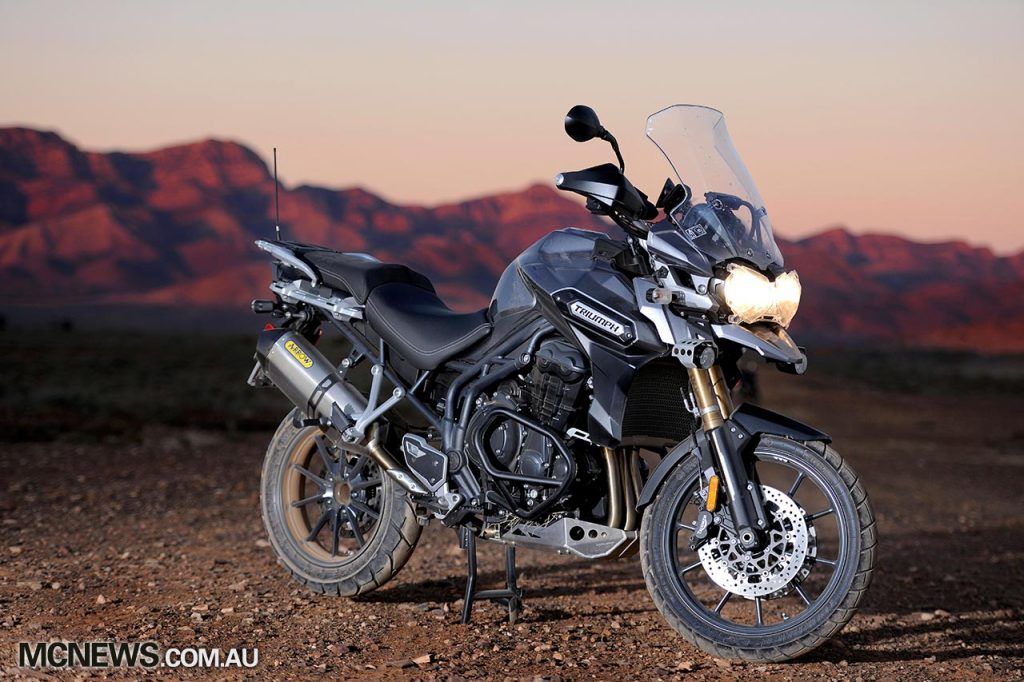
Handling is excellent with the weight kept down low and the wide bars allowing plenty of leverage to throw the machine from side to side in the hills. It’s hard to tell in isolation if the Triumph has the on-road measure of the BMW or Honda, but it’s certainly not far off the mark and this is something we will trial back-to-back at a later stage. I did find myself running a little wider than I expected at times which was surprising.
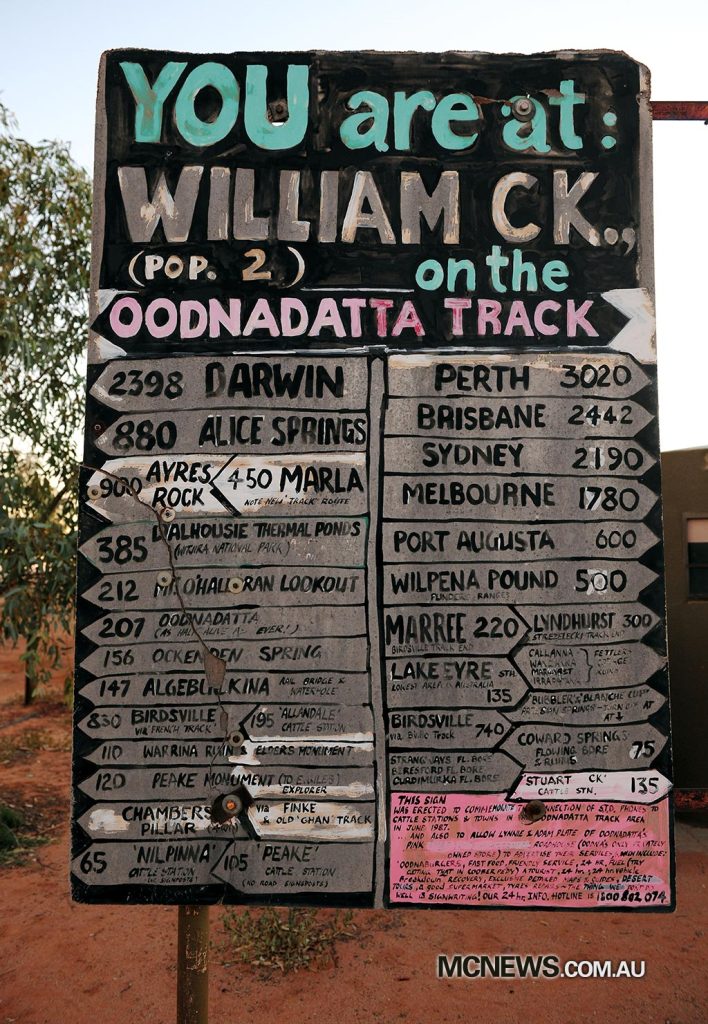
It purrs along a little over 3500rpm at the national speed limit and the 20-litre tank provides a comfortable 300km touring range.
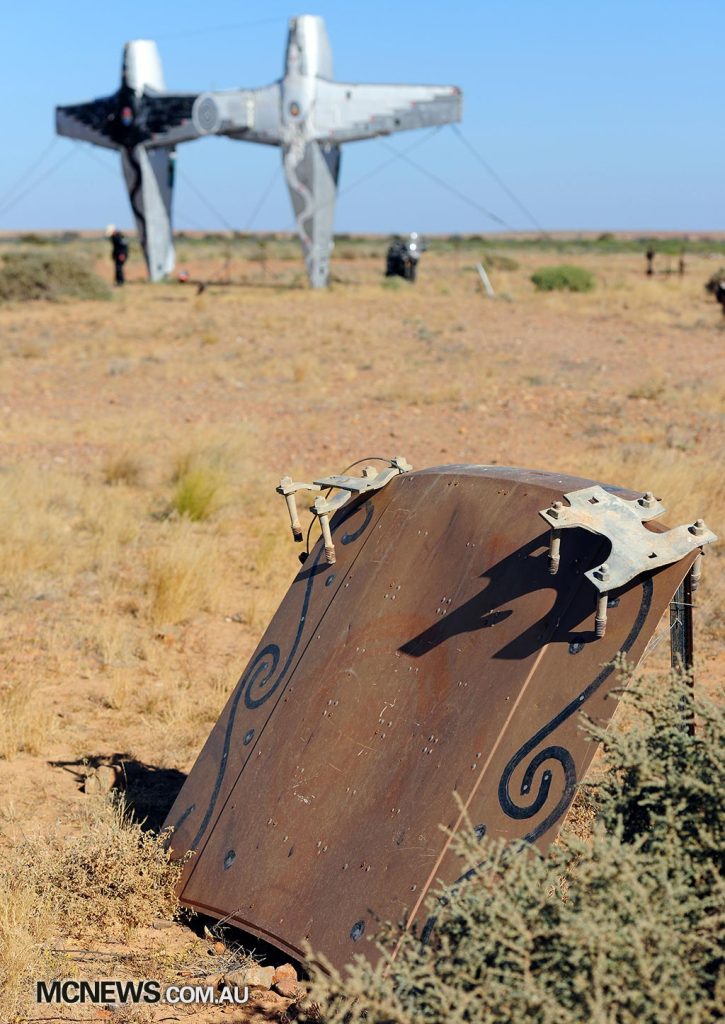
One electronic gizmo the Triumph does miss out on in comparison to the BMW is the German machine’s optional electronic suspension adjustments. As long as the BMW holds that ace up its sleeve it is hard to imagine any of its competitors scoring more highly in the suspension department. The BMW allows for ride height and suspension travel changes at the press of a button, instantly tailoring the machine for any mission. Hopefully this is a feature Triumph and other manufacturers will soon implement to really take the game to BMW. Triumph do provide a hydraulically assisted hand-wheel to adjust rear preload but all other adjustments require tools, thus when surfaces change you just can’t be bothered.
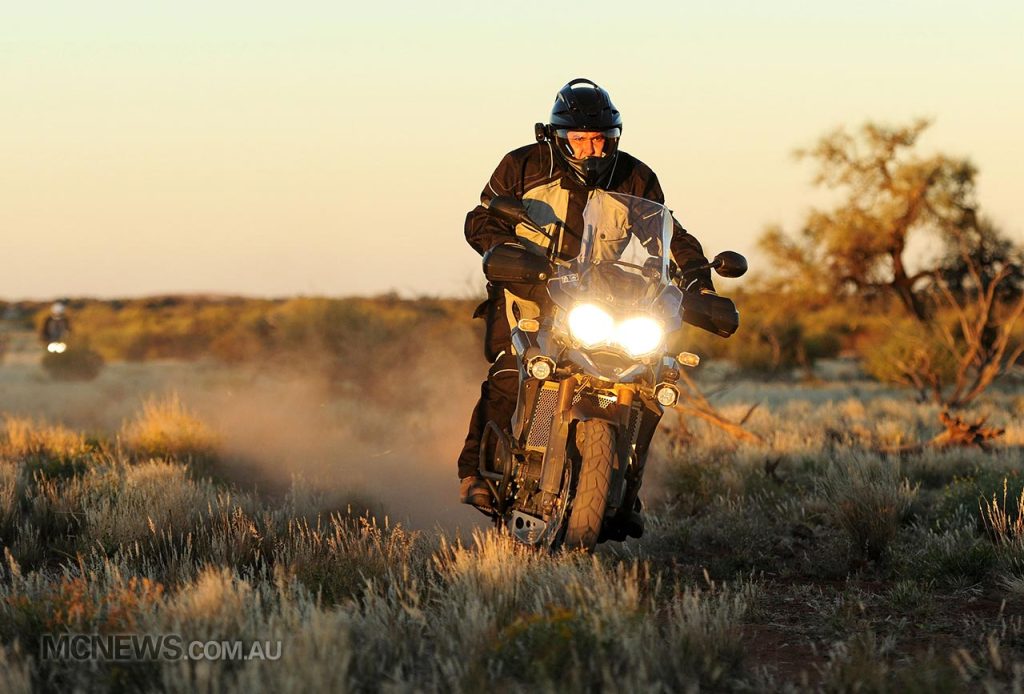
Braking performance is impressive, no complaints here. The brakes are powerful, the ABS system intuitive and responsive when needed, yet can be turned off when you want to get serious off-road. Likewise the traction control system can be switched through an intrusive intervention mode, an intermediate mode that offers some degree of slip before winding back the power, and off for when you are hitting the sand, crossing a creek or want to play silly buggers. Exactly the differing levels of functionality this doctor would have ordered.
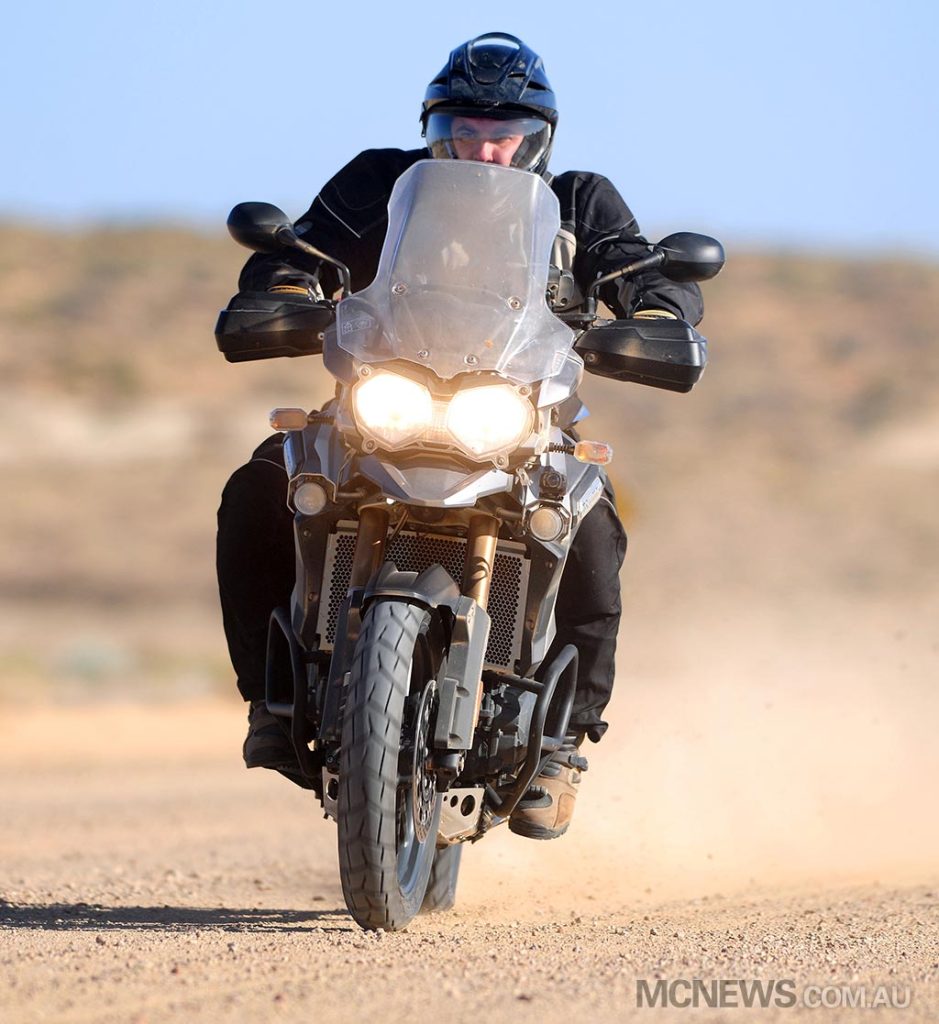
The Explorer rides on 150/70-17 and 110/80-19 Metzeler Tourance rubber, which in my opinion is a good choice of size and flavour. The narrow rear perhaps limits the machine a smidgen when throwing caution to the wind on the blacktop but that is a minor trade-off to pay for the go anywhere ability of the Tourance rubber thus sized. If the rear was any fatter the Triumph’s off-road ability would be severely compromised to a much larger extent than the modest size holds it back while scraping footpegs. The rims are cast alloy and the scribe previously on our test bike for the run up from Adelaide to Uluru had managed to dent both the front and rear, whether that was through a complete lack of mechanical sympathy or abuse I don’t know, but via the same route I never put any more dings in the rims. Spoked rims would be nice, but it is not as if they magically do not bend too if abused, my KTM 990 Adventure R currently carries a sizeable dent in the front rim despite running 28 psi on a recent Snowy River Trip.
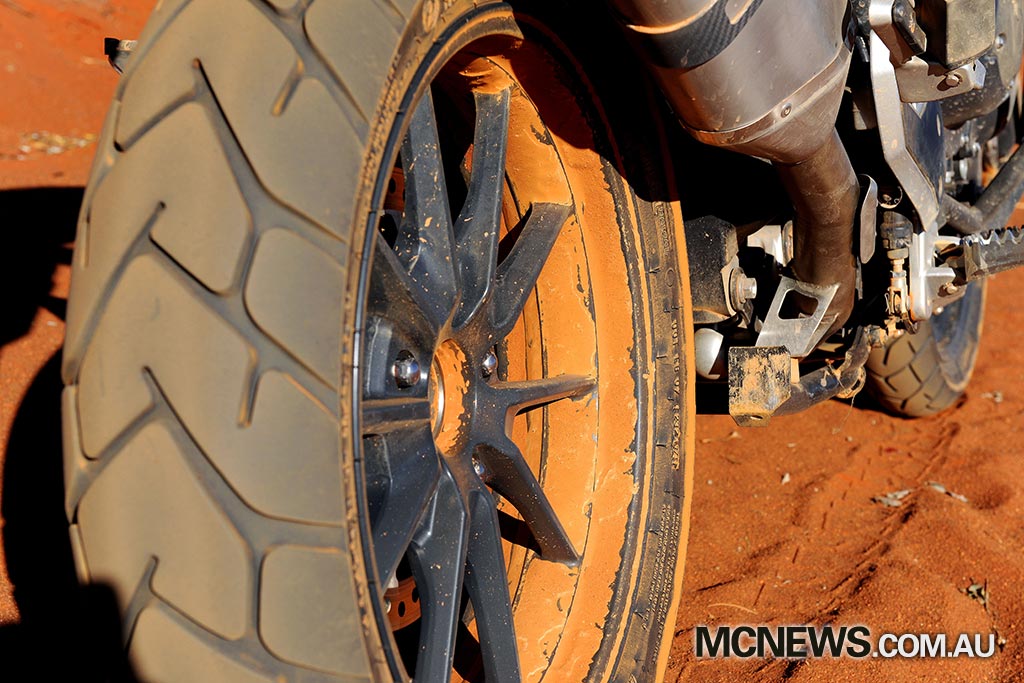
Instrumentation is comprehensive and fully featured with virtually every function switchable from the bars. It works well but like virtually every modern Triumph, from an aesthetic standpoint I still think the gauges look naff, so it’s a good job they work well. It’s better than having form over function, any day.
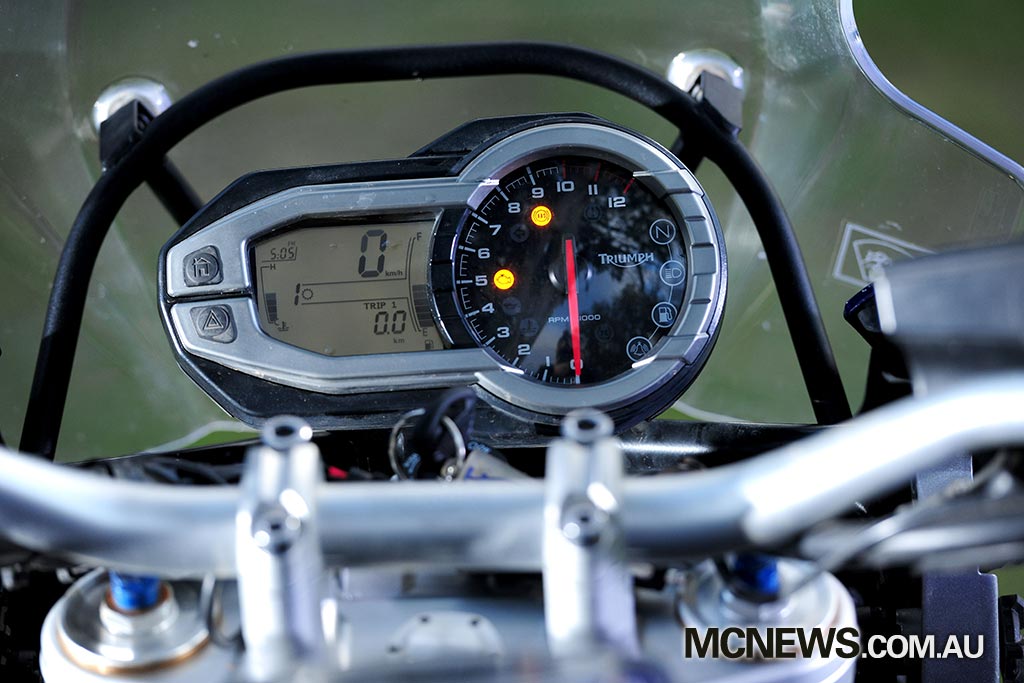
Triumph offers a full range of hard luggage to go with Explorer but we are yet to put a machine thus fitted through its paces. From the pictures we have seen though the panniers ($1095) look encouragingly low. The optional top box ($549 + $245 for mount) comes complete with an integrated electrical outlet to charge your gear on the go to supplement the standard tank mounted 12v outlet. Nice.
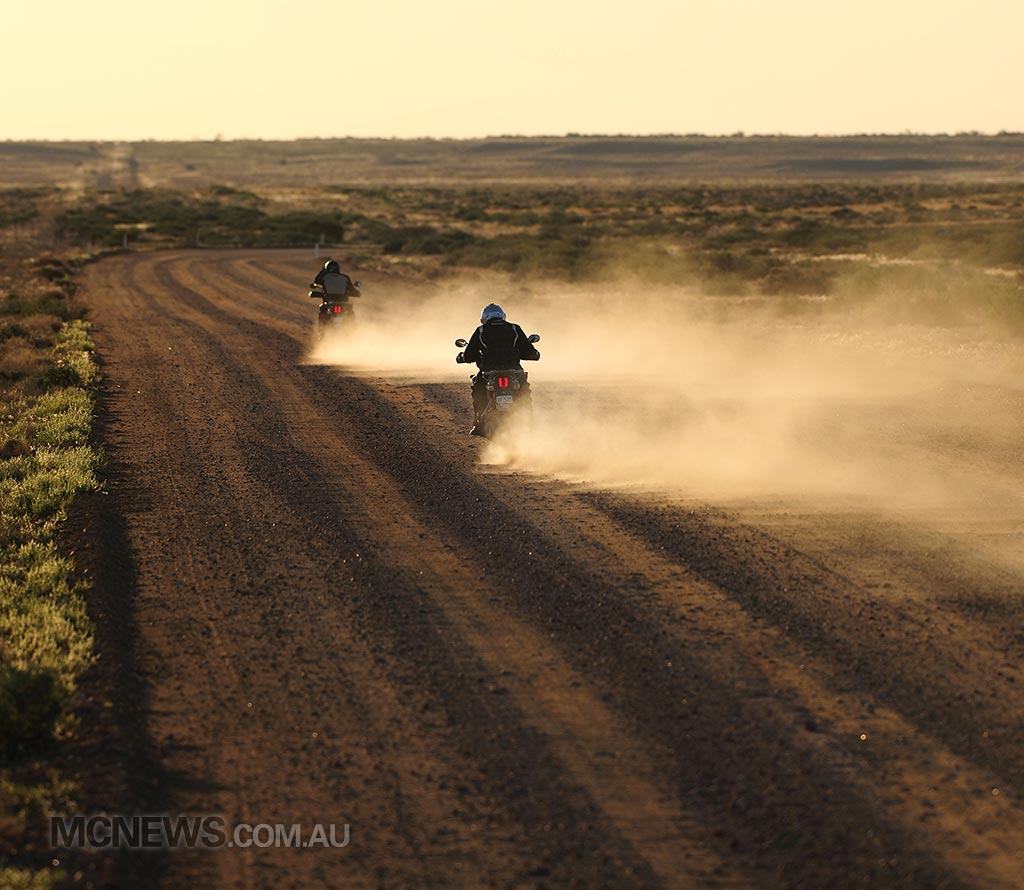
It took me some time to appreciate the styling of the Explorer and I must say that it looks much tougher with a thick coating of dust residing in all its nooks and crannies to really highlight the detail in the surface changes of the engine and other components. Like a black and white photo, dusted up it renders fine third dimension detail much more easily to the eye and lends the machine a distinctly masculine ruggedness to its persona.
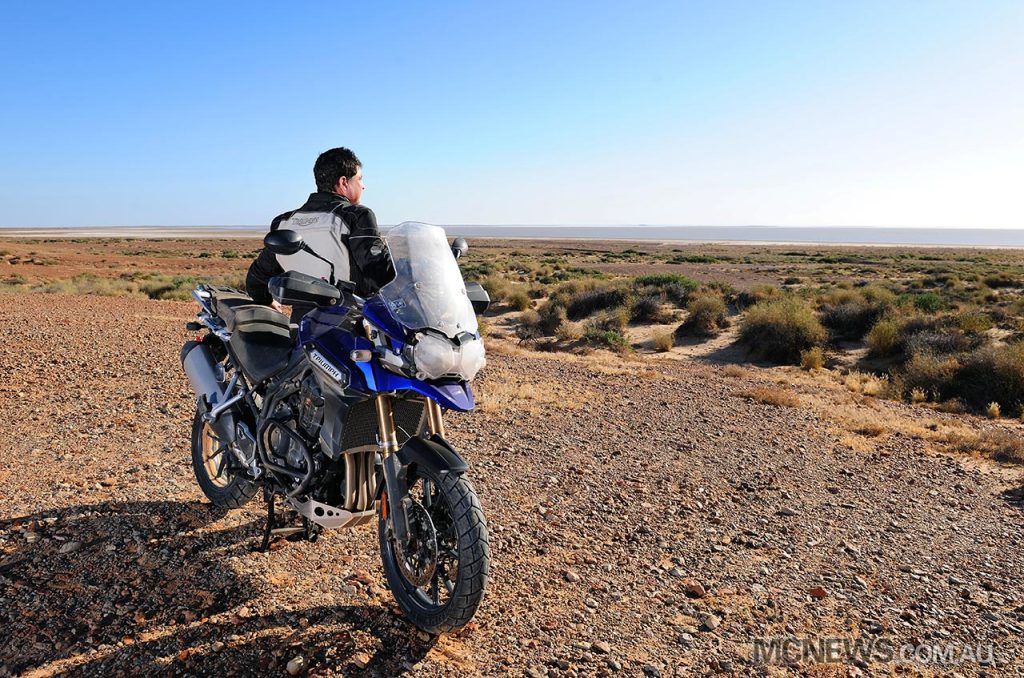
So have Triumph hit that target?
They have. Certainly it’s no mortal wound. BMW have a 30 year lineage of history backing up their warhorse and the modern twin-cam GS is just too damn good for any new player to simply come along and knock it over in the first battle. The war however is shaping up to be a long one and as they fight on price and features the winners will be us, the consumers.
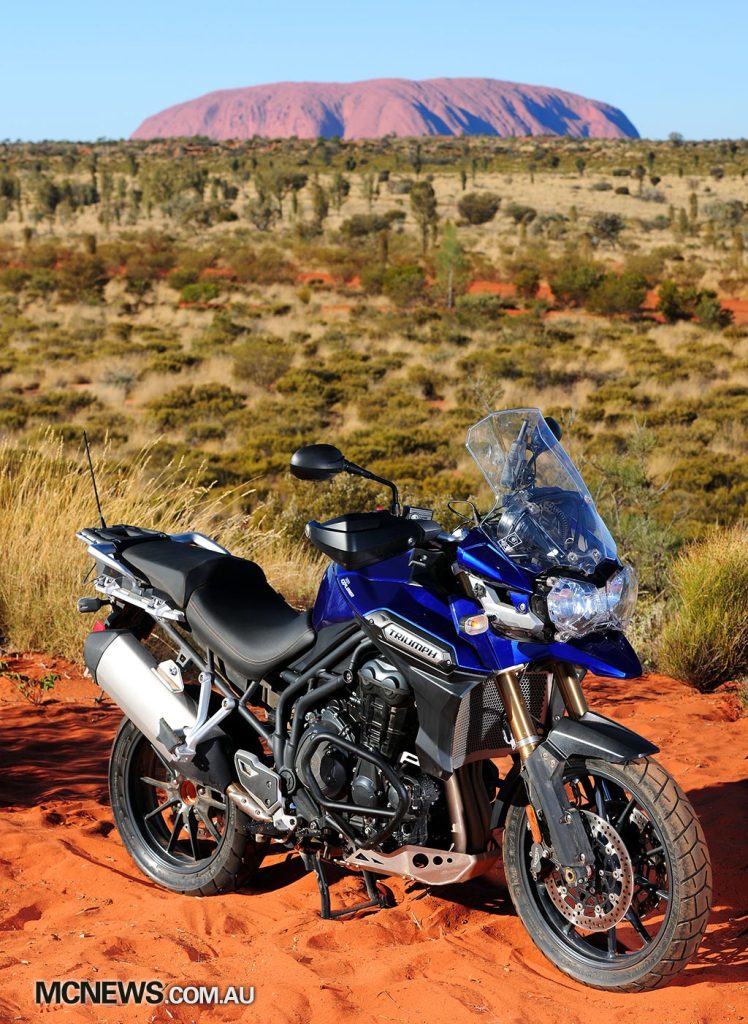
Starting at $21,790 though it is clear Triumph are chasing the top end of the market as the pricing is fairly line-ball with the R 1200 GS ($22,190). BMW will charge you an extra $2235 for traction, ABS and tyre pressure monitoring but heated grips are standard; while the Triumph comes standard with traction/ABS and charges $216 for TPM. Perhaps in response to the Triumph marketplace challenge, BMW are currently throwing in traction control, ABS and tyre pressure monitoring bringing the price thus loaded back to equal Triumph’s Explorer. Yamaha are also currently offering a $2000 outback pack with the XTZ1200 Super Tenere and Honda have released the Crosstourer at $19,995, thus the competition is certainly hotting up in this corner of the market.
Ticking the options list on any of these machines can empty your wallet real fast. As tested our Triumph Explorer 1200 costs over 25k; add the full complement of luggage and that blows out to 27k which means by the time you walk out the door of the dealership the final on-road tally could be nudging towards 30 grand. Expensive business this adventure-touring in luxury caper… It is great fun and seriously addictive though…
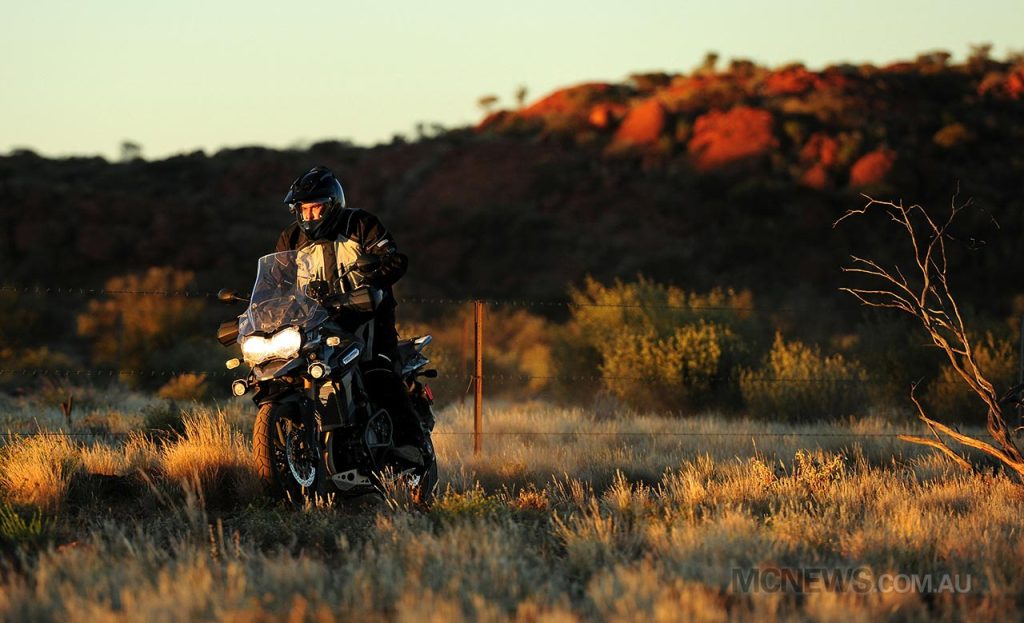
2012 Triumph Tiger Explorer 1200 Specifications
Engine – 1215cc, liquid cooled, DOHC, three-cylinder
Bore x Stroke – 85 x 71.4mm
Induction – EFI
Transmission – Six speed
Seat Height – 840-860mm (optional low 810 or high 895mm seats)
Wet Weight – 259kg
Front Brakes – 305mm disc rotors, four-piston calipers
Rear Brake – 282mm disc, twin-piston caliper
Fuel Capacity – 20 Litres
Economy – 6 litres per 100km
Range – 320km
Warranty – Two years
Price – $21,790 (spec’ tested $25,082)
Verdict – ****½
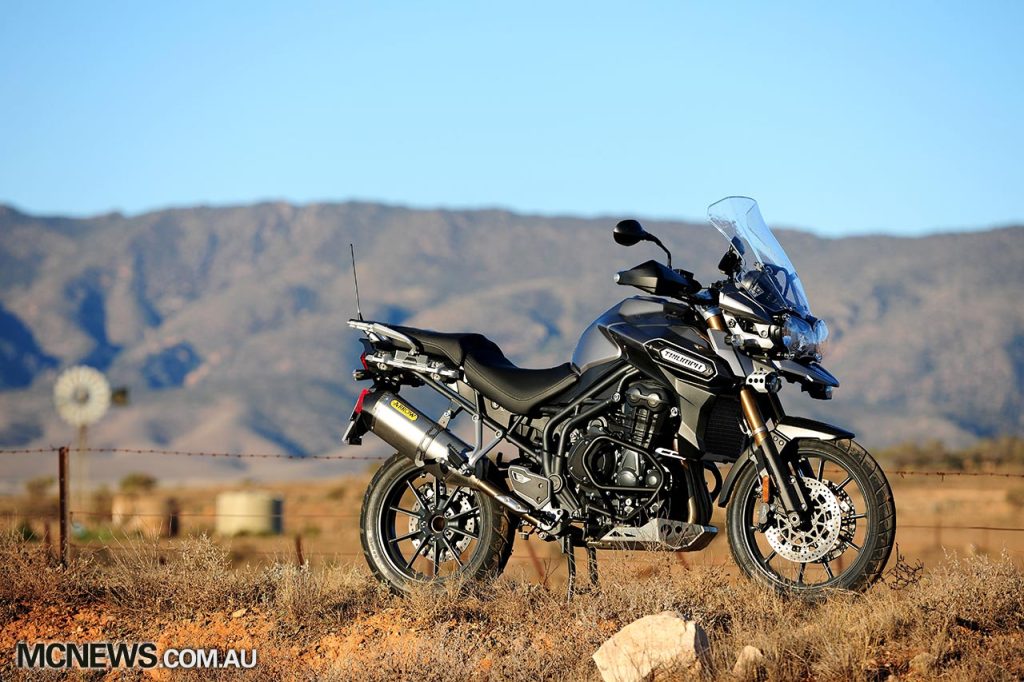
2012 Triumph Tiger Explorer 1200
Positives
+ Powerful but smooth and easy to use
+ Great shaft drive / gearbox
+ Comfortable
+ Good electronics suite
+ Great load capacity
Negatives
– More charisma to the engine please
– No electronically adjustable suspension
– Suspension could be a little more compliant for Aussie roads
